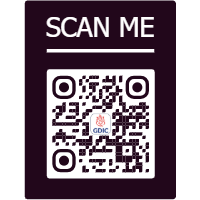
Key Fact As of 2019, it has been seen that an estimated population of 9 million get ill and sick from typhoid and around 110 000 people end up dying from it each year. The Typhoid fever is known to be a...
Key Fact
- As of 2019, it has been seen that an estimated population of 9 million get ill and sick from typhoid and around 110 000 people end up dying from it each year.
The Typhoid fever is known to be a life-threatening infection caused by the bacterium called Salmonella Typhi.
It is generally spread through the contaminated food or water. Once Salmonella Typhi bacteria are ingested, they undergo multiplication and then it spreads into the bloodstream.
Other Name- Enteric Fever
In the In 1980s, typhoid fever was defined as pathologically unique illness, on the basis of the enlarged peyers patches. (It keeps the normal intestinal flora and pathogens at bay)
It is to be noted that urbanization and intense climate change have potential to increase the global burden of the typhoid disease.
In addition, it is alarming that the resistance to antibiotic treatment is also on rise, which makes it easier for the typhoid to spread in most communities that in general lack any access to the safe drinking water or even adequate sanitation.
Symptoms of Typhoid Fever
The Etiologic agents of salmonella serotypes to enteric fever are- S. Typhi. And S. Paratyphi.
The Salmonella Typhi lives only in human beings. Infected people with typhoid fever are seen to be carrying this bacterium in their bloodstream and the intestinal tract.
The symptoms include the following:
- Prolonged high fever and chills
- Fatigue
- Headache
- Nausea
- Abdominal pain
- Constipation or diarrhea
- Sometimes even a rash
The Severe cases might further lead to the serious complications or even death.
Disease Burden
The Improved living conditions and introduction of the antibiotics have resulted in the drastic reduction of typhoid fever morbidity and further even mortality in many industrialized countries.
Risk Factors of Typhoid Fever
The Typhoid risk is seen to be higher in populations that further lack access to the safe water and also in case, the causes of typhoid fever are due to the following living conditions and situation:
- Adequate sanitation
- Flooding
- Food and drinks purchased from street vendors
- Raw fruits and vegetables in the fields fertilized with sewage
- Ill-house hold contacts
- Lack of hand washing and toilet access
- Evidence of prior Helicobacter pylori infection (chronic reduced gastric acidity) and children are at highest risk.
Note: Healthcare workers acquire enteric fever after exposure to infected patients or while processing clinical specimens and cultures.
Diagnosis of Typhoid Fever
Note: It is seen that no specific laboratory test is diagnostic for enteric fever.
The closest test to detect typhoid infection in your body is as follows:
Medical and travel history
Your health care professional may might typhoid fever based on the symptoms, and medical history along with travel history.
The diagnosis then often confirmed by the Salmonella enterica serotype Typhi in the sample of the body fluid of the infected individual or tissue.
Body fluid or tissue culture
The sample of the blood, stool, urine or bone marrow may be used. The sample is then placed in the environment where the bacteria would grow easily.
Here, the growth, is called a culture, this is then checked under the microscope for detecting the typhoid bacteria.
More so, the bone marrow culture may be considered often as the most sensitive test for detecting Salmonella Typhi.
It is seen that the culture test is known to be the most common diagnostic test.
But there are other testing methods that might be used to confirm the typhoid fever.
One of them is a test that is used to detect antibodies that have been generated in response to typhoid bacteria in the blood.
Another test that checks for the typhoid DNA in the bloodstream.
Widal Test
The Widal test (Diagnostic tool) is known to measure the capacity of the antibodies against LPS and the flagella (bacterial part) in the serum of patients with suspected typhoid fever so to agglutinate the cells of S. Typhi.
Typhi Dot test
The Typhidot test is considered to be a rapid serological test that would assists medical professionals in the diagnosis of typhoid fever.
When this bacterium is seen to enter your body, the immune system would then releases two types of antibodies, namely IgG and IgM, to fight against this bacteria—Acute Typhoid Fever (Positive Typhi Dot test)
Treatment of Typhoid Fever
The Typhoid fever can be treated with the use of antibiotics. The Antimicrobial resistance is seen to be quite common with likelihood of further more complicated and an expensive treatment options that are required in the most affected regions.
Some of the medications listed are as follows:
- Ceftriaxone
- Azithromycin
- Amoxicillin
- Chloramphenicol
- Trimethoprim-sulfamethoxazole
- Ciprofloxacin
Even when symptoms fade away, the patients post recovery might still be carrying the typhoid bacteria, i.e. They can still spread it to others, through the shedding of the bacteria in their faeces (stool).
- Wash your hands with soap and water once you are done using the bathroom and also avoid either preparing or even serving food for other people.
- This would then lower the chance of passing any infection to someone else.
- Have your doctor to test so as to ensure that no Salmonella Typhi bacteria would remain in the body.
Prevention of Typhoid Fever
Note from Ganesh Diagnostic and Imaging Center
The Typhoid fever is quite common in places with poor sanitation and also lack of safe drinking water and food.
Follow the next few guidelines to further prevent typhoid fever
- Access to safe water and also adequate sanitation
- Hygiene among the food handlers
- Typhoid vaccination
These all are considered to be effective in further preventing typhoid fever.
The following recommendations would also aid in ensuring safety while you are travelling:
- Ensure that the food has been properly cooked and hot when it is served.
- Avoid any raw milk and also products that are made from raw milk. Please drink only pasteurized or only boiled milk.
- Avoid consuming an ice unless you are sure that it is made from safe water.
- Boiling water before use
- Washing Hands regularly
- Consume fruits and vegetables post removing the peel
Typhoid Vaccine- WHO Guidelines
- The typhoid conjugate vaccine is recommended for the use in children from 6 months of age and in adults up to 45 years or 65 years (depending on the vaccine).
- Two typhoid conjugate vaccines have been prequalified by WHO since December 2017 and are being introduced into childhood immunization programs in typhoid endemic countries.
Why should Ganesh diagnostic and Imaging Centre be your preference for getting Typhoid fever Test done?
At Ganesh Diagnostic and Imaging Centre, we are known for providing excellent service and care to its patients for decades. Lakhs of satisfied patients over the years!
It is an established and renowned diagnostic centre since 2001.
Their excellence is backed by NABH and NABL Accreditations.
NABH accreditation is proof of highest standard of care and service provided to the patients. NABL accreditation reflects the competency of laboratories and equipment based on some national and international standards.
Test report is available digitally too.
Ganesh Diagnostic and Imaging Centre is a one-stop solution for getting all kinds of tests done, as all services are available under one roof.
The aim of GDIC is to provide world’s finest technology at the lowest price.
The rates of scans are reasonably priced. Ganesh Diagnostic and Imaging Centre also offer FLAT 50% OFF on many tests.
Patients can rely upon test reports as reports are 100% accurate.
To seek Free Consultation from the Doctor:
Contact- Dr. Ravin Sharma, (MBBS, MD Radiology)
Available: 24*7*365
Phone Number: +91 9212125996
Detect your Typhoid Fever at Ganesh Diagnostic and Imaging Center
- Typhoid Fever Test Package - BOOK NOW
- Typhoid Fever Panel Test - BOOK NOW
- Typhoid DNA Detection Test - BOOK NOW
- Widal Slide Test - BOOK NOW
References
- https://www.who.int/news-room/fact-sheets/detail/typhoid?gclid=CjwKCAjwxOymBhAFEiwAnodBLAS3RMV-q-JNxsl8_NSFBIrOiWbStz17zklVMWvPtyrkbDjjWpg55RoCAHwQAvD_BwE
- Harrison’s Principles of Internal Medicine, 20 th edition, Volume 1(p1175-p1177)
- https://en.wikipedia.org/wiki/Typhoid_fever













